Search Results
Fine Jewelry University Articles matching: “Lab created sapphire”
Showing only FJU Article results. Click here to show all results.
Fine Jewelry University (Show All FJU Articles)
-
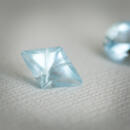
Gem in the Spotlight: Aquamarine
… in shades of blue-green. Aquamarine has a refractive index of 1.577 to 1.583 and is doubly refractive. Aquamarine’s specific gravity is 2.72 and it has a Mohs hardness of 7.5-8.0. For comparison, this means that it is softer than Sapphire, harder than Quartz, and similar to Topaz. This makes it a very durable stone that is suitable for regular wear. But, care should still be taken to ensure that the stone is not damaged. Caring For and Cleaning Aquamarine To maintain the …
-
Frequently Asked Question about Jewelry
… in the field. The pace of change in the gem industry is staggering. What is Moissanite? Moissanite is lab–created silicon carbide. It has become an excellent diamond imitation since it gives a positive reading on a thermal inertia testers (… between a Diamond Certificate and an Appraisal? A Diamond Certificate is a document issued by a Gemological Laboratory describing a Loose Diamond. The laboratory will not issue certificates on Diamonds which are set in a mounting. A …
-
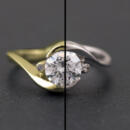
Star White Gold
…generally three grades of gasoline, regular (really the lowest), mid grade, and premium. In addition, not all gas is created equally. We have all had the experience of poor performance due to poorly made gas. White gold also has three grades… have sensitivity to the nickel in white gold. Star white gold has been evaluated by a leading independent testing laboratory. The Star White gold family of alloys does not require rhodium plating. They have been color tested by the …
-
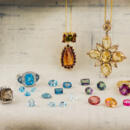
Gem in the Spotlight: Topaz
… difficult it is to scratch something. For reference, topaz is a bit softer than diamond which is a 10 and corundum (sapphire/ruby) which is a 9 on the scale. It is a bit harder than emerald at 7.5-8 and quartz which comes in at 7. Here are …if more orange). Smokey Topaz: Brownish grey color. Blue Topaz: The most common color. A full range of shades is available from light Sky Blue to dark London Blue. Topaz is also found in less commonly known colors like green, pink, and …
-
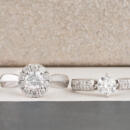
Anatomy of a Ring
… also adds a degree of security to the center stone as the arches can protect it from some side impacts. It also creates a difficult to clean area on the underside of the cathedral arches that can build up with dirt over time. We created an entire video on cathedral rings which you can checkout if you are interested in learning more about them. Halo Halo rings have been very popular for sometime and so you may be familiar with this one already. The “halo” refers to the …
-
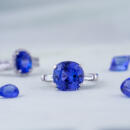
Gem in the Spotlight: Tanzanite
…, even with its rarity and dynamic look, tanzanite is still less in price than more commonly known gems like rubies, sapphires, and emeralds. Gemology of Tanzanite Gemologists refer to this gem as blue zoisite. The vast majority (current … its color. Tanzanite has a Moh’s hardness of 6-7, making it about the same hardness as quartz, softer than ruby, sapphire and emerald and hard than opal. Tanzanite has a refractive index of 1.69-1.70. History and Lore of Tanzanite Tanzanite …
-
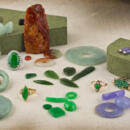
Gem in the Spotlight: Jade
…, maw sit sit, and hydrogrossular garnet. For a short amount of time, a few laboratories produced synthetic (lab–created) jadeite. This proved to be unprofitable and was quickly forgotten; however, a small amount of it remains on the market … a big impact on how gems are worn and what they can handle. We all know diamonds are the hardest gem commonly available on earth. If you scraped them together, a diamond would scratch a piece of jade while the much softer jade wouldn’t …
-
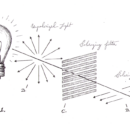
The Magic of Polarized Light
… (DR) and they will split incoming light in multiple directions. Some common examples of doubly refractive gems are sapphire, tourmaline, and moissanite. These are contrasted with singly refractive (SR) gems like diamond that only bend light … is partially polarized. This is because some of the rays pass through the water, and some of them reflect. In a lab we typically polarize light by using a polarizing filter. These filters have a coating on them applied in such a way …
-
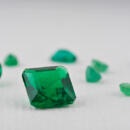
Gem in the Spotlight: Emerald
… of chromium and vanadium in the crystal structure. Emerald’s Mohs hardness rating is 7.5-8 making it softer than sapphire and harder than amethyst and other quartz varieties. The refractive index of emerald ranges from 1.57 to 1.58, making … to make the fractures less visible. It is so common that if the stone doesn’t have a report from a reputable lab (like GIA) saying otherwise, it is assumed that it has been treated with some level of fracture filling. If you do come …